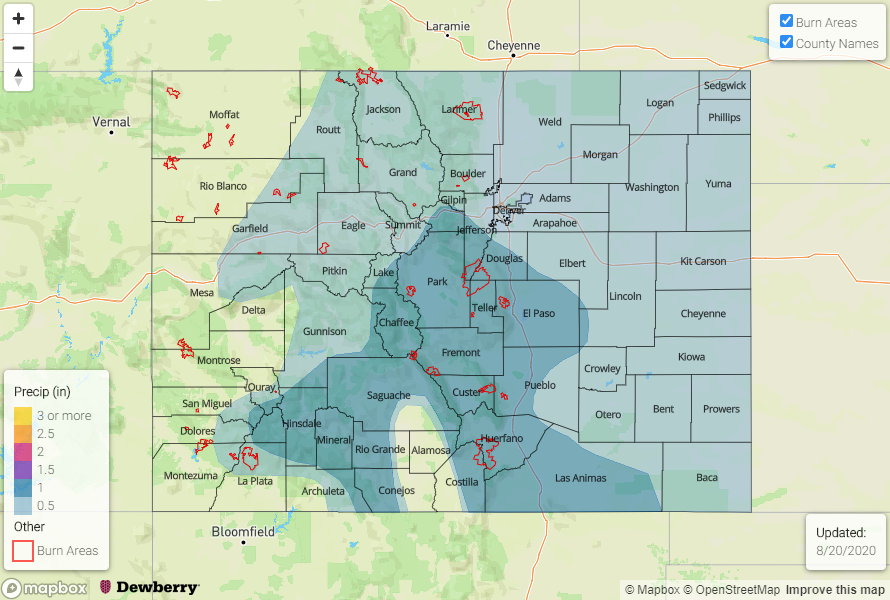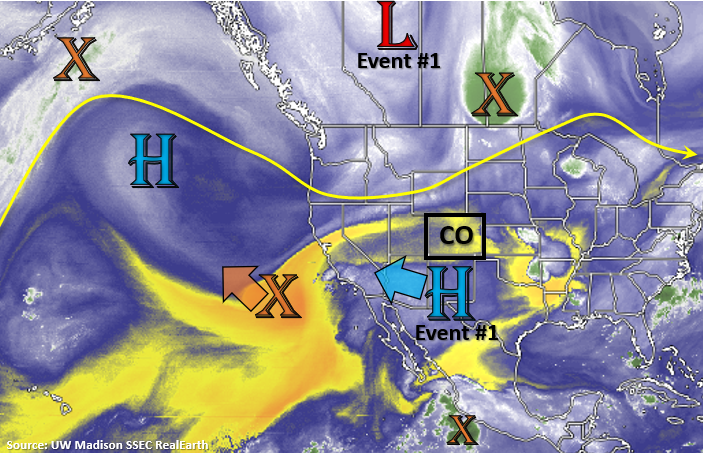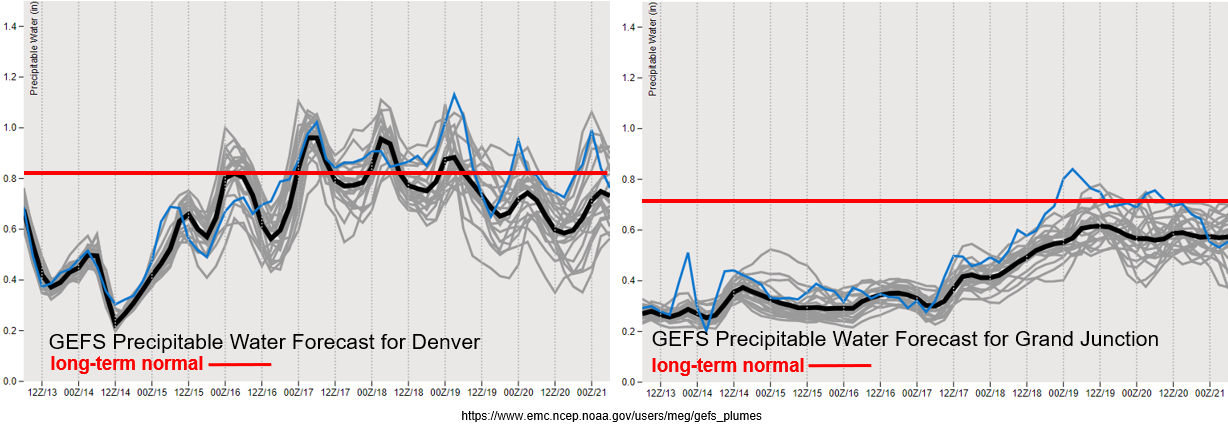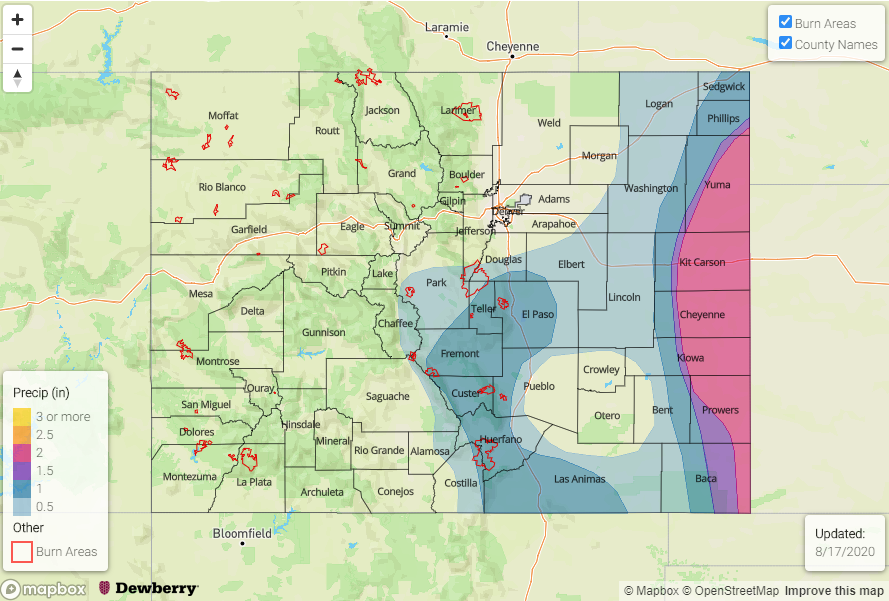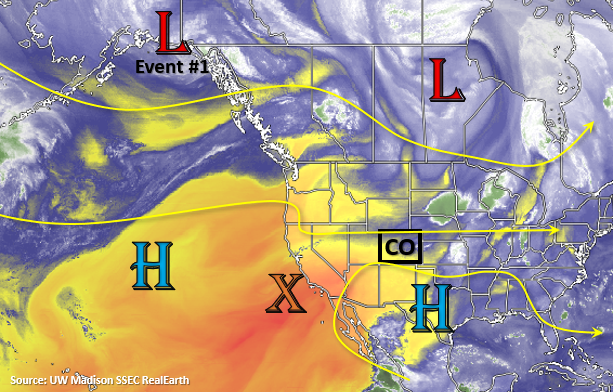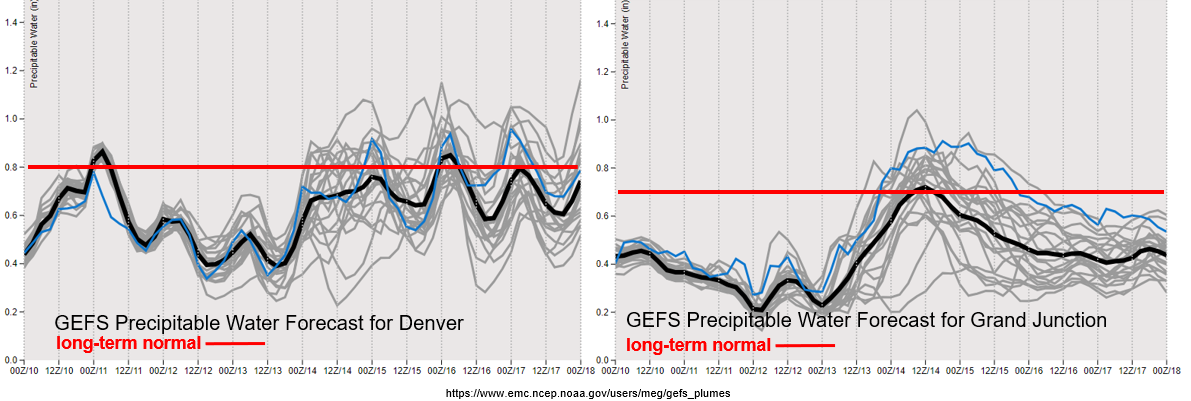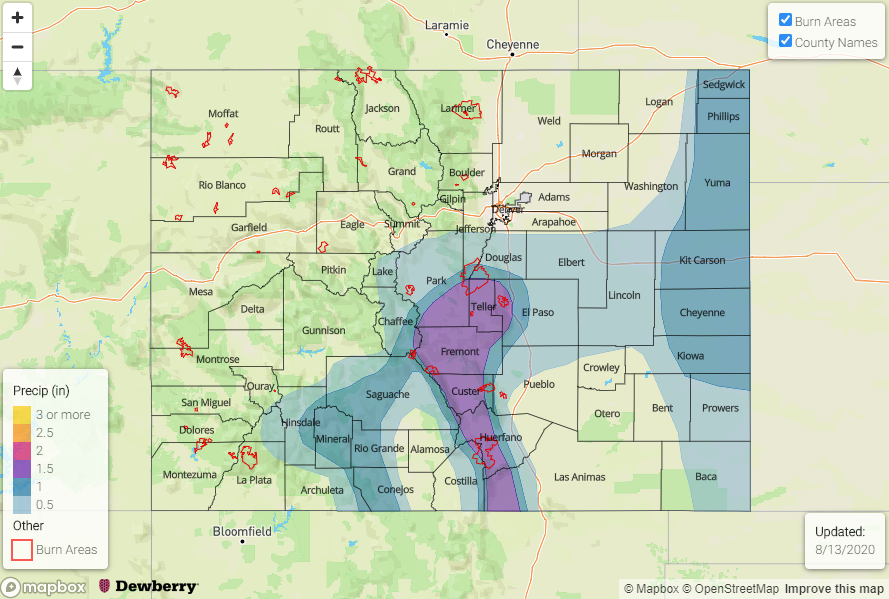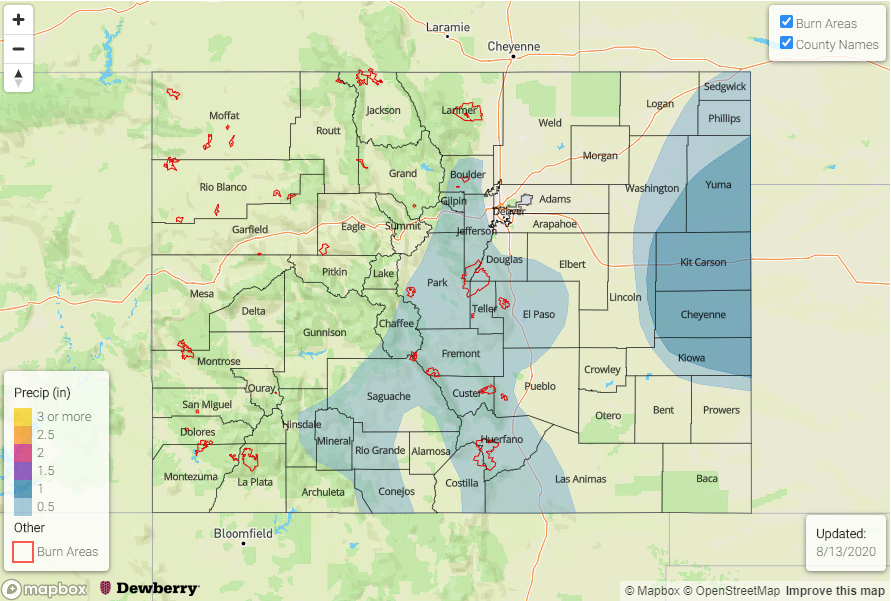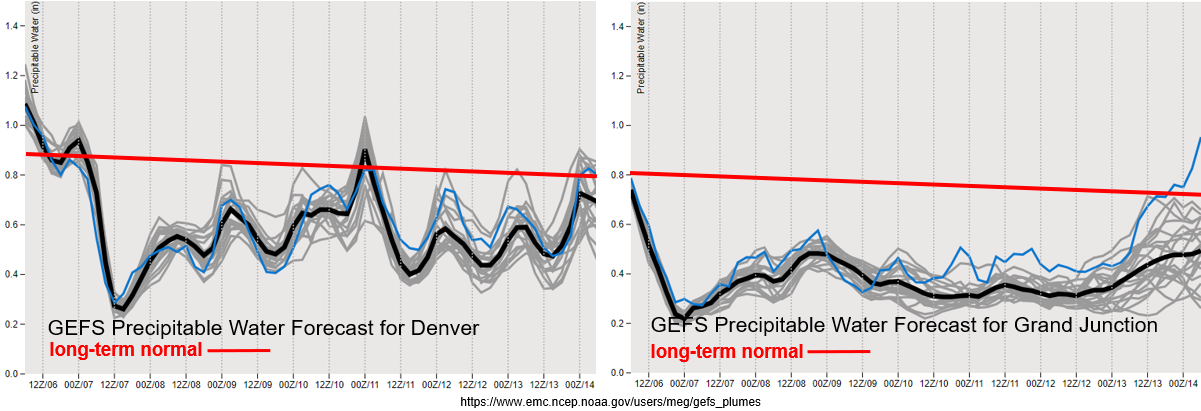Issue Date: Monday, August 17th, 2020
Issue Time: 2:20PM MDT
Valid Dates: 8/18– 9/1

The anomalously strong ridge will stay in place to start the week, which will keep hot temperatures in the forecast statewide. Highs will be on the rise the next couple days over western Colorado with the eastern plains at least getting some relief from the heat as weak cold fronts ever so often move through the north and northwesterly flow. This will keep PW hovering around average over eastern Colorado, and produce a couple days with elevated moisture over the plains. Therefore, afternoon storm chances will remain high for the first portion of the forecast period, although storm coverage may be spotty and mostly confined to the eastern/southern mountains and immediate adjacent plains. It also looks like more shortwave action and higher moisture on Wednesday and Thursday over eastern Colorado, so an Elevated flood threat has been issued.
As the next trough moves onshore by the end of the week, it will help to break down the strong ridge and bring some higher moisture back and cooler temperatures back into western Colorado. Unfortunately, the tightening pressure gradient may also mean an increase in the surface wind speeds. By early next week, some of Hurricane Genevieve’s moisture (marked below in orange) and mid-level energy may make its way around the ridge axis and into Colorado. So, an Elevated flood threat has been issued from Monday into Thursday with fingers crossed this pattern continues to develop. The rainfall is very much needed.
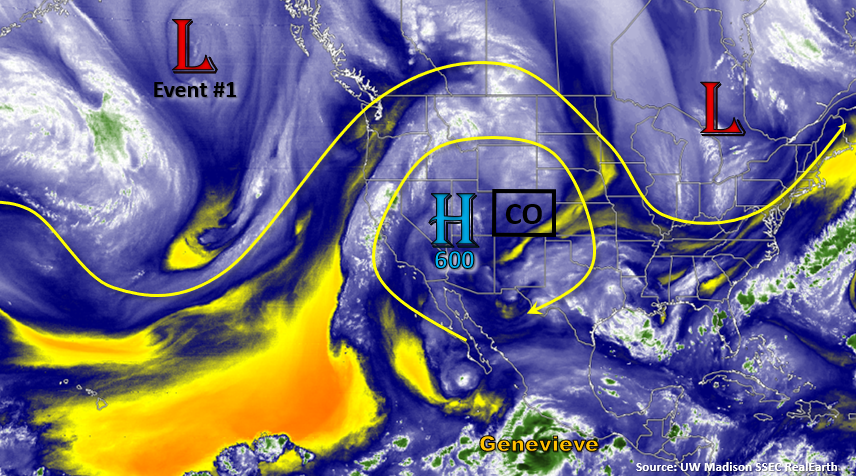
Looking like PW remains around average the next couple days over eastern Colorado. There’s a slight decrease in moisture before Wednesday, thus the No Apparent flood threat for tomorrow. A little bit of spread in the model members by the end of the week, but still plenty of low-level moisture for daily rounds of storms. For the most part, storms should stick to the high terrains and move south, but occasional adjacent plains convection should be expected. You can keep track of that in the daily FTB.
Finally, some more moisture over western Colorado by mid-week. This should help increase relative humidity values, which is good for fighting the ongoing fires. However, increased surface winds and gusty outflow winds from storms that form (and possibly dry lightning) should also be expected as the trough moves inland. While these factors are not helpful for the ongoing fires, the increased moisture will be very welcomed.
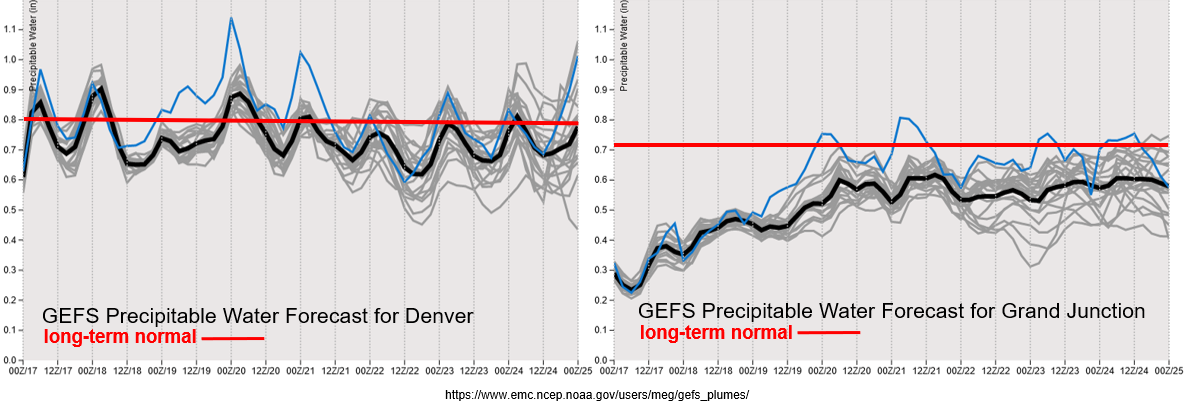
The monthly reservoir storage just came out from the NRCS for the month of July. Despite the very warm and dry conditions, not a large drop off in the percent of average usable storage. In fact, it increased over the Upper Rio Grande with that heavy rainfall event from July 23rd – 28th likely contributing. The Upper Rio Grande now sits at 63% of average with northern Colorado still above 100% of average. Statewide, we are 90% of average with 60% of capacity. For comparison, this time last year, we were 116% of average.
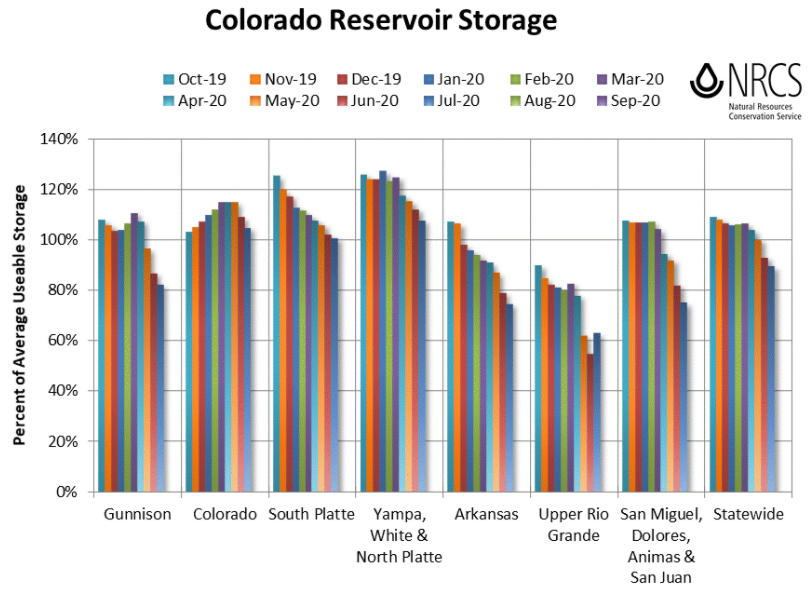
Event #1: Tuesday – Friday (8/18 – 8/21)
Elevated/No Apparent for eastern Colorado as on and off mid-level energy and moisture combine for afternoon thunderstorms.
Looking at lee troughing most every afternoon for this event. Tomorrow, it looks like the trough will set up far enough east that the best moisture will be in Kansas, but some storms will be still be possible near the border. On Wednesday and Thursday, the lee troughing looks to help keep moisture higher back to the west, so forecasting more widespread storms forecast over the eastern and southern mountains. With slow steering flow under the ridge, if storms track over burn areas, they may be capable of producing flash flooding along with mud and debris flows. Additionally, some stronger storms over more urban areas could create some nuisance street flooding on days where the storm motion has a slight westerly component. Heavier rainfall should favor the Palmer and Raton Ridge as they move off the mountains due to slightly higher moisture concentration and increased convergence. Without much shear, storms aren’t expected to produce large hail, but you can follow those details as they evolve in the daily FTB.
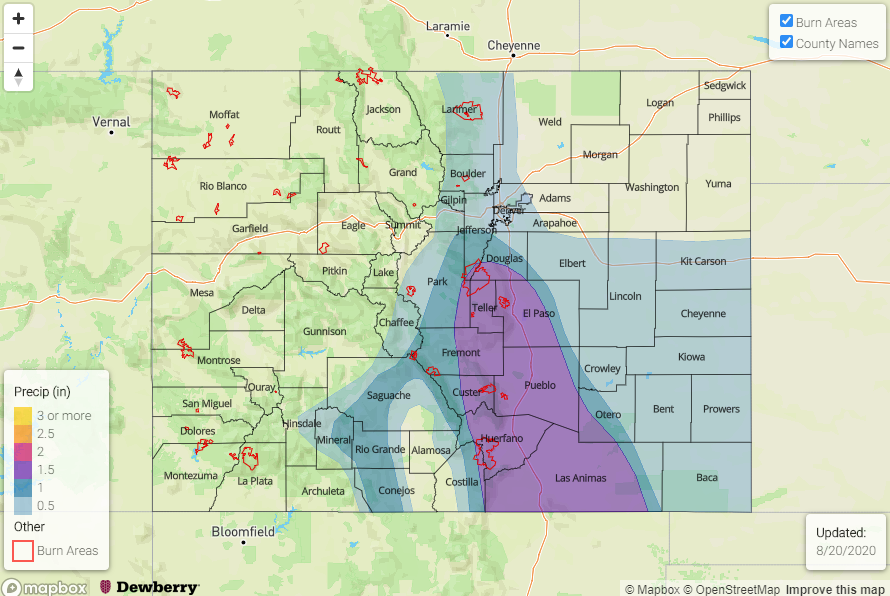
Event #2: Saturday – Thursday (8/22 – 8/27)
Elevated/No Apparent threat as an incoming trough places the ridge axis in a favorable position to transport moisture into the state.
Really hoping that this pattern holds because we need the moisture, especially over western Colorado. Right now, remnant moisture from Genevieve looks to make its way around the ridge and into Colorado by early next week. Still a lot of questions about how much moisture, and which days will have the greatest amounts. But with mid-level energy also moving through the flow, going to go with an Elevated flood threat for this event. Don’t pay too much attention to the map below, just wanted to highlight the areas that will probably see more rainfall than others, and show the chance of precipitation returning to western Colorado. The last day Grand Junction reported more than 0.05 inches of precipitation was on June 30th (0.07 inches), and the Craig-Moffat last saw over 0.05 inches on July 29th (0.22 inches)!
